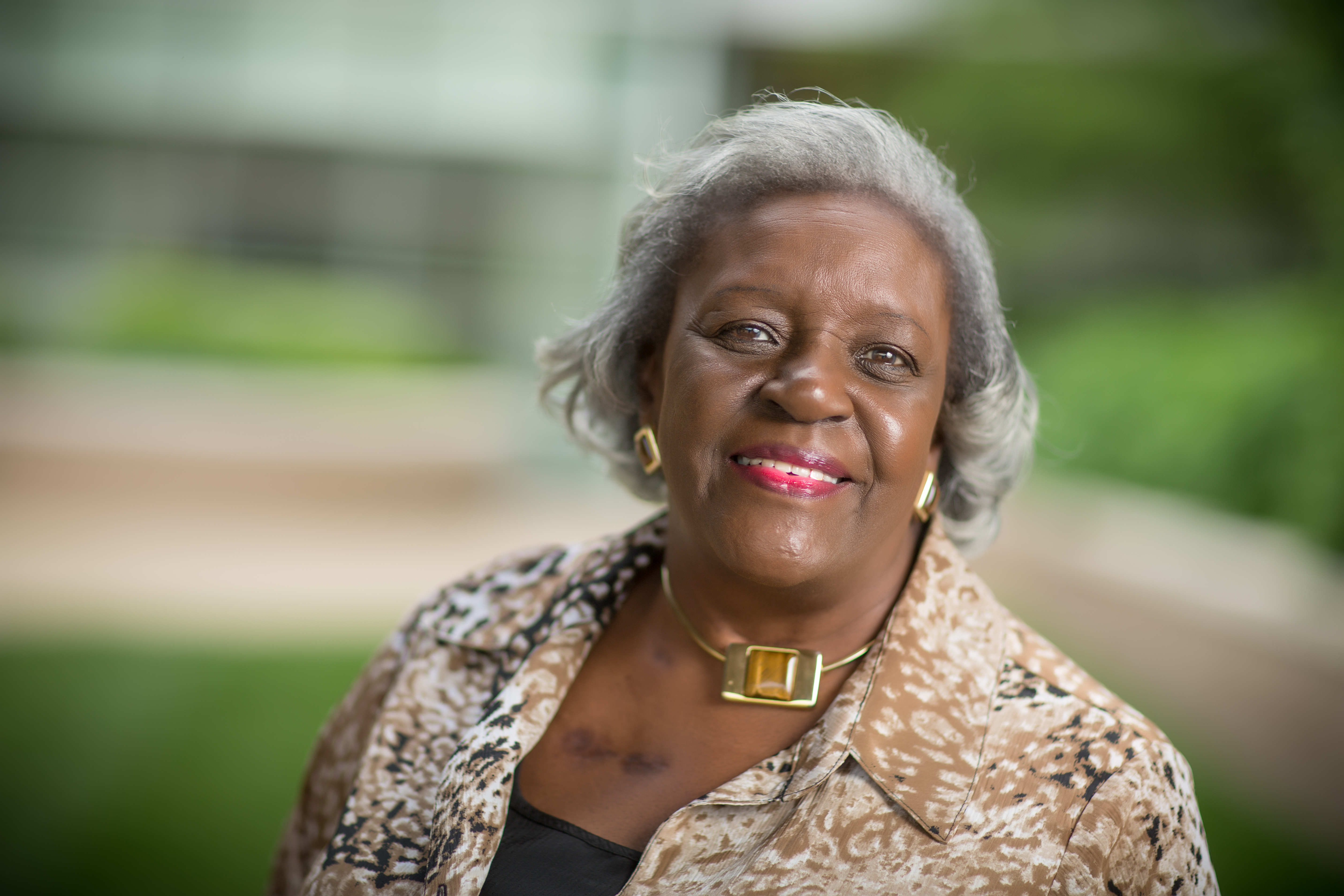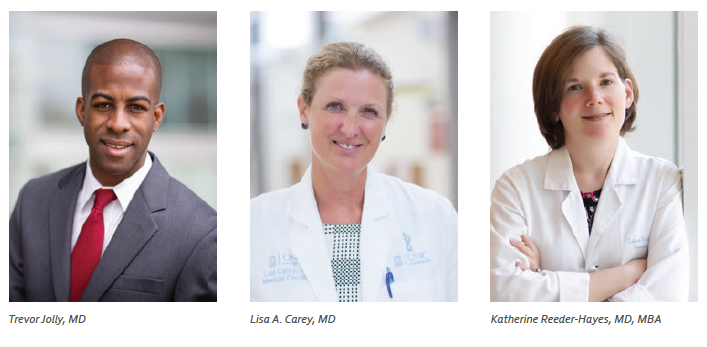A potentially life-saving breast cancer treatment was part of the care plan for one Orange County woman, but UNC Lineberger researchers have found gaps in how the treatment is used nationwide.


When Elaine McCauley was first diagnosed with breast cancer two years ago, one of her initial thoughts was about the care of her youngest daughter.
“I really didn’t have time to dwell on my situation,” the 67-year-old Orange County resident says. “I was concerned for my daughter. Who would take care of her if something happened to me?”
McCauley, who comes from a large family of 16 children, grew up on a tobacco farm in North Carolina. She’s always had a strong work ethic and a sense of dedication, working in cotton mills and other jobs in Alamance County after she got married. McCauley’s role changed when she became the primary caretaker of her youngest daughter, who has disabilities and required at-home care after she was born. McCauley returned to work when her daughter began school.
“When I got the call about my cancer diagnosis, I put my trust in my doctor at the N.C. Cancer Hospital,” McCauley says. “I was praying all along that his decisions about my treatment would be the best ones for me—and for my daughter.
McCauley was diagnosed with an advanced form of HER2-positive breast cancer, explains medical oncologist, Trevor Jolly, MD, an assistant professor in the UNC School of Medicine. That cancer type, which used to be considered the most aggressive, is now among the most curable.
A drug was approved by the U.S. Food and Drug Administration in 2006 that specifically targets HER2-overexpressing breast cancers. This drug, trastuzumab, which is commercially known as Herceptin, has dramatically increased survival rates for patients with HER2-positive breast cancer, a disease that afflicts about one-in-five breast cancer patients. “From my perspective, there was no question that Elaine needed this particular therapy, which we think has accomplished our goal of getting rid of her cancer,” Jolly says.
After receiving Herceptin in combination with chemotherapy, surgery and radiation, followed by a year of taking Herceptin alone, McCauley is more than two years out from her diagnosis. She is now cancer-free.
“It was worth it to me,” McCauley says of her treatment. “My grandchildren, my sisters and my brothers—being around them—kept me motivated.”
While McCauley has had an excellent response to Herceptin, a recent study led by UNC Lineberger researchers reveals that a significant percentage of women over age 65 years are not getting the drug. The question remains—why?
Fifty percent of white women and 60 percent of black women didn’t get a drug that improves survival by nearly 40 percent.
In a population of 1,362 women who were diagnosed with non-metastatic HER2-positive breast cancer in 2010 and 2011, researchers found that only 50 percent of white women and 40 percent of black women received the drug. The women in the study were 66 years or older and insured by Medicare, so theoretically, all had access to the medication and health insurance coverage.
Black women were 25 percent less likely to receive the drug within one year of diagnosis than whites, even after accounting for other factors that could influence access to the treatment, such as poverty and the presence of other health conditions.
“Fifty percent of white women and 60 percent of black women didn’t get a drug that improves survival by nearly 40 percent. If confirmed, these are terrible numbers,” says study co-author Lisa A. Carey, MD, a UNC Lineberger member, the physician-in-chief of the N.C. Cancer Hospital and the Richardson and Marilyn Jacobs Preyer Distinguished Professor in Breast Cancer Research at the UNC School of Medicine. “There was broad underutilization of what is a very effective therapy; we must find out why.”
The researchers noted that their study cannot account for several potential limitations that might affect a woman’s ability to be treated with Herceptin. For example, the drug is costly, and although patients in the sample were all insured by Medicare, there could have been variation in the use of supplemental insurance plans among the women studied. In addition, the long period of time that the drug is recommended to be used in combination with chemotherapy may act as a barrier to patients with unreliable transportation or job insecurity.
“It may not be possible to determine which of these things is the driver of disparity in this particular treatment,” says the study’s first author Katherine Reeder-Hayes, MD, MBA, a UNC Lineberger member and assistant professor in the UNC School of Medicine. “Maybe what this means is that when all of those factors occur, it’s a warning sign that vulnerable people may not get the care they need.”
